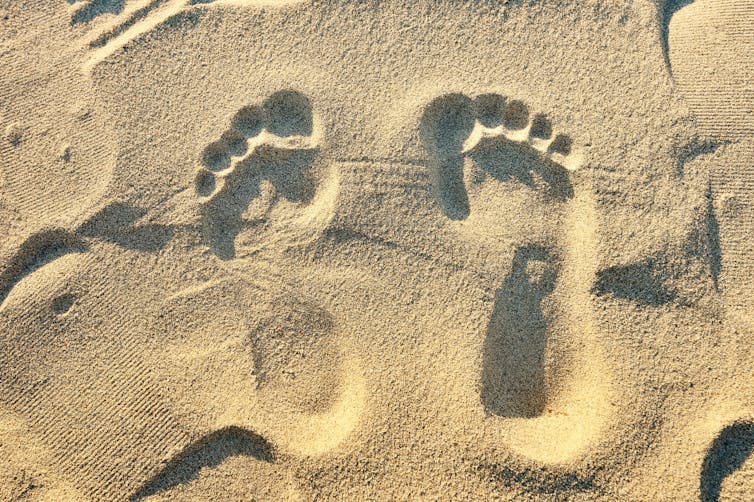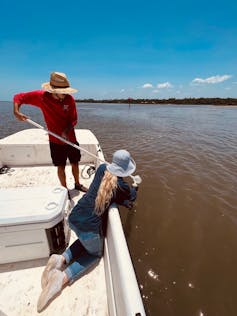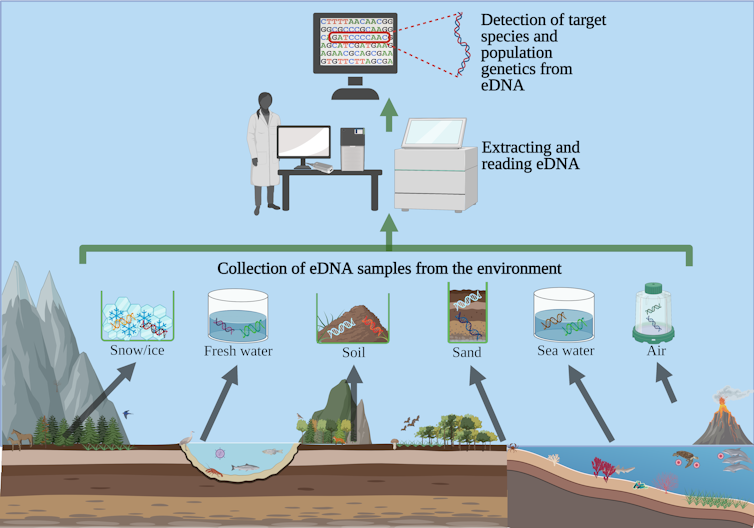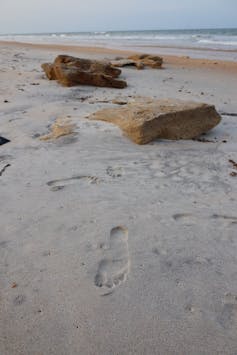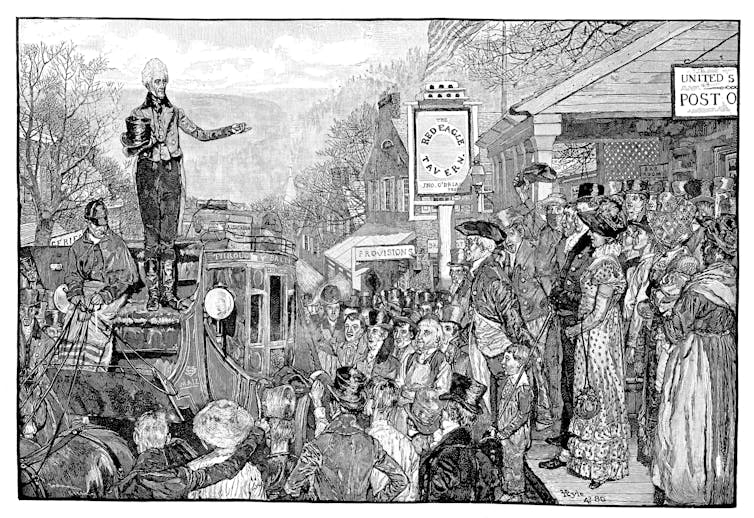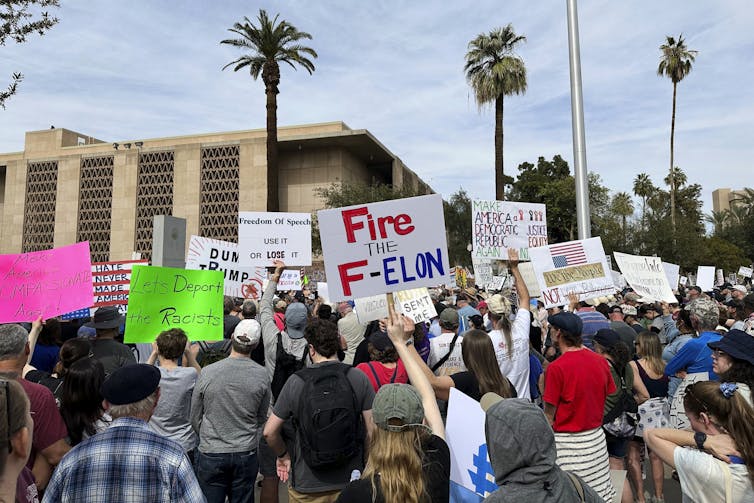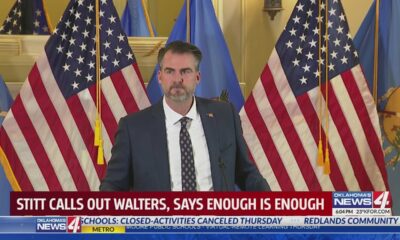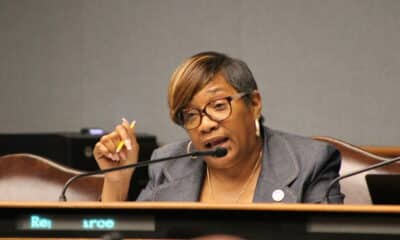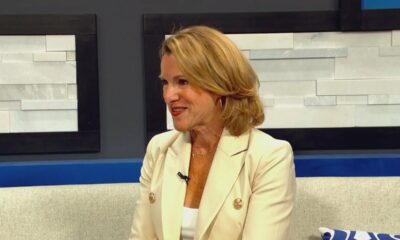
Andrew Harnick/Getty Images
Alex Hinton, Rutgers University – Newark
At the start of his inaugural address on Jan. 20, 2025, President Donald Trump declared, “The golden age of America begins right now!”
A month later, Trump’s supporters gathered at the annual Conservative Political Action Conference, or CPAC, in Oxon Hill, Maryland, from Feb. 19-22 to celebrate the advent of this golden age.
Gold glitter jackets, emblazoned with phrases like “Trump the Golden Era,” are for sale in the CPAC exhibition hall. There, attendees decked out in other MAGA-themed clothing and accessories network and mingle. They visit booths with politically charged signs that say “Defund Planned Parenthood” and collect brochures on topics like “The Gender Industrial Complex.”
Another booth with a yellow and black striped backdrop resembling a prison cell’s bars was called a “Deportation Center.” Attendees photographed themselves at this booth, posing beside full-size cutouts of Trump and his border czar, Tom Homan.
Former Jan. 6 prisoners, including Proud Boys’ former leader Enrique Tarrio, have also been a visible – and controversial – presence at CPAC.
The conference’s proceedings kicked off on Feb. 20 with an Arizona pastor, Joshua Navarrete, saying, to loud applause, “We are living in the greatest time of our era – the golden age!”
Many subsequent speakers repeated this phrase, celebrating the country’s “golden age.”
For many outside observers, claims of a golden age might seem odd.
Just months ago during the 2024 presidential campaign, Trump said that an American apocalypse was underway, driven by a U.S. economy in shambles and major cities overrun by an “invasion” of “illegal alien” “terrorists,” “rapists” and “murderers.”
Now, Trump’s critics argue, the U.S. is led by a convicted felon who is implementing policies that are reckless, stupid and harmful.
Further, these critics contend, Trump’s illegal power grabs are leading to a constitutional crisis that could cause democracy to crumble in the U.S.
How, they wonder, could anyone believe the country is in a golden age?
As an anthropologist of U.S. political culture, I have been studying the Make America Great Again, or MAGA, movement for years. I wrote a related 2021 book, “It Can Happen Here.” And I continue to do MAGA research at places like this year’s CPAC, where the mood has been giddy.
Here are three reasons why the MAGA faithful believe a golden age has begun. The list begins, and ends, with Trump.

Saul Loeb/AFP via Getty Images
1. The warrior hero
Trump supporters contend that after the Jan. 6, 2021, Capitol attacks, which they consider a “peaceful protest,” Trump became a political pariah and victim.
Like many a mythic hero, Trump’s response was “never surrender.” In 2023, he repeatedly told his MAGA faithful, “I am your warrior, I am your justice.”
Trump’s heroism, his supporters believe, was illustrated after a bullet grazed his ear during an assassination attempt in Pennsylvania in July 2024. Trump quickly rose to his feet, pumped his fist in the air and yelled, “Fight, fight, fight.”
The phrase became a MAGA rally cry and, in February 2025, it has been stamped on CPAC attendees’ shirts and jackets.
After Trump’s 2024 election victory, many Trump supporters dubbed it
“the greatest comeback in political history.” MAGA populist Steven Bannon invoked this phrase at a pre-CPAC event on Feb. 19.
When Bannon spoke on the CPAC main stage on Feb. 20, he led the crowd in a raucous “fight, fight, fight” chant. He compared Trump with Abraham Lincoln and George Washington and called for him to run again for president in 2028.
This is despite the fact that Trump running for a third term would violate the Constitution.
2. A wrecking ball
The MAGA faithful believe that Trump is like a human “wrecking ball,” as evangelical leader Lance Wallnau said in 2015. This metaphor speaks to how Trump supporters believe the president is tearing down an entrenched, corrupt system.
The day Trump took office, MAGA stalwarts underscore, he began to “drain the swamp” with a slew of executive orders.
One established the Department of Government Efficiency, or DOGE, which is devoted to eliminating government waste. DOGE, led by billionaire Elon Musk, has dismantled USAID and fired thousands of government workers whom MAGA views as part of an anti-Trump “deep state.”
Musk stole the show at CPAC on Feb. 20. Speaking to a cheering crowd, Musk held up a large red chain saw and yelled, “This is the chain saw for bureaucracy.”
Speaker after speaker at this year’s CPAC have celebrated this and other wrecking-ball achievements on panels with titles like “Red Tape Reckoning,” “Crushing Woke Board Rooms” and “The Takedown of Left Tech.”
3. The Midas touch
A golden age requires a builder. Who better, the MAGA faithful believe, than a billionaire businessman with a self-proclaimed “Midas touch.” This refers to King Midas, a figure in Greek mythology who turns everything he touches into pure gold.
“Trump Will Fix It” signs filled his 2024 campaign rallies. And MAGA supporters note that Trump began fixing the country on Day 1 by “flooding the zone” with executive orders aimed at implementing his four-pronged “America First” promise. In addition to draining the swamp, this plan pledges to “make America safe again,” “make America affordable and energy dominant again” and “bring back American values.”
These themes run through the remarks of almost every CPAC speaker, who offer nonstop praise about how Trump is securing the country’s borders, increasing energy independence, repatriating who they call illegal aliens, restoring free speech and reducing government regulation and waste.
CPAC speakers said that Trump has already racked up a slew of successes just a month into his presidency.
This includes Trump using the threat of tariffs to bring other countries to the negotiating table.
Meanwhile, Trump supporters are pleased that he has been working to cut deals to end the conflict in Gaza and the war between Russia and Ukraine, while reorienting U.S. foreign policy to focus on China.
House Speaker Mike Johnson expressed the prevailing MAGA sentiment when he stated at CPAC that Trump “wrote the art of the deal. He knows what he’s doing.”

Andrew Harnick/Getty Images
American exceptionalism restored
The golden-age celebration at CPAC centered on Trump and his mission to “make America great again.”
Speaker after speaker, including foreign conservative leaders from around the world, paid homage to Trump and this message.
During her CPAC speech, Liz Truss, the former prime minister of the U.K., stated, “This is truly the golden age of America.” Truss, who does not have a current political position, told the CPAC audience that she wanted to copy the MAGA playbook in order to “make Britain great again.”
The MAGA faithful believe that Trump is restoring an era of American exceptionalism in which the U.S. is an economic powerhouse, common sense is the rule, and traditional values centered on God, family and freedom are celebrated.
And they believe in a future where the U.S. is, as Trump said in his inaugural address, “the envy of every nation.”![]()
Alex Hinton, Distinguished Professor of Anthropology; Director, Center for the Study of Genocide and Human Rights, Rutgers University – Newark
This article is republished from The Conversation under a Creative Commons license. Read the original article.
